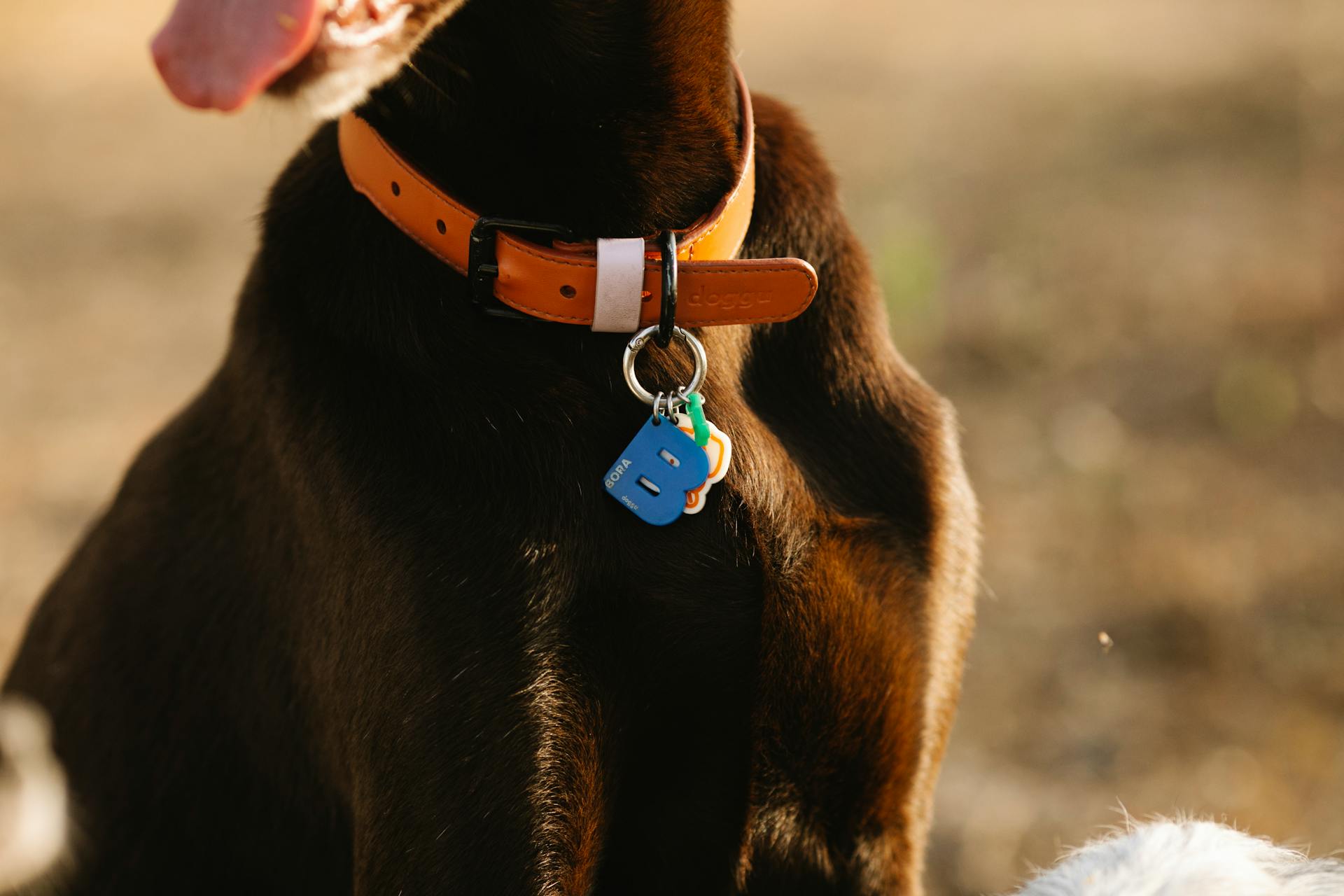
Using an e collar after surgery can be a challenging experience for both you and your furry friend. The goal is to minimize discomfort and promote a smooth recovery.
Most veterinarians recommend keeping the e collar on for 2 to 4 weeks after surgery, depending on the type of procedure and your dog's individual needs.
This duration helps prevent licking and chewing at the incision site, which can lead to infection and delay healing.
Why Use an E-Collar?
Wearing an Elizabethan collar, or E-collar, after surgery is a crucial step in preventing your dog from accidentally injuring themselves. This is especially true for dogs that like to lick their wounds, which can delay healing and lead to infection.
Dogs naturally want to lick their wounds, but this can cause more harm than good. By wearing an E-collar, you're protecting your dog from themselves.
Many dogs initially resist wearing an E-collar, banging into objects and getting upset. But most dogs get used to the collar after a few hours.
Worth a look: Dogs Lick
To make the transition smoother, keep your dog in a confined space where they can't knock over objects. Remove any small items that could get knocked off tables or shelves.
Supervising your dog during the first few hours is essential to ensure they don't injure themselves trying to remove the collar.
E-Collar Usage
An Elizabethan collar, also known as an E-collar or the "cone of shame", is a plastic or fabric cone placed around the head to prevent an animal from licking or chewing at a surgery site, wound, or dressing.
The primary purpose of the collar is to prevent your dog from directly traumatizing a surgical site or injured area of the body. It's natural for dogs to lick their wounds, but this can seriously delay healing and result in infection or injury.
Many dogs initially resent wearing a protective collar, banging into objects and getting frightened or upset. However, most dogs get used to the collar after a few hours.
To ease the transition, keep your dog in a confined space where there are no movable objects, and remove anything small that could get knocked off tables or shelves. Supervise your dog during the first few hours to make sure they don't injure themselves trying to remove it.
The collar restricts vision from the sides and behind, causing difficulty for many dogs when they must walk in tight or narrow spaces. Assist them as much as possible.
The collar must be worn until the wound has fully healed, which can be as short as a few days or as long as a few weeks.
Potential Issues
Infections can occur if the e-collar is not properly cleaned and maintained, as seen in the article's discussion on "Hygiene and Cleaning".
Wearing an e-collar for an extended period can lead to skin irritation and discomfort, which is a common issue mentioned in the article.
Proper fitting of the e-collar is crucial to prevent skin irritation and discomfort, as explained in the article's section on "Fitting the E-Collar".
The e-collar can interfere with the surgical site, causing irritation or even infection, which is a potential issue discussed in the article's section on "Monitoring the Surgical Site".
It's essential to monitor the surgical site regularly for any signs of infection or irritation, as advised in the article's section on "Monitoring the Surgical Site".
Common Concerns
One of the biggest concerns pet owners have after surgery is whether their dog will be able to wear an e-collar comfortably.
The size and fit of the e-collar are crucial to prevent skin irritation and discomfort.
Some pet owners worry that their dog will hate wearing an e-collar, but many dogs adjust to it quickly.
According to the article, most dogs can get used to wearing an e-collar within a few days, but some may take up to a week.
The type of surgery your dog has undergone can also affect how well they tolerate an e-collar.
For example, dogs who have undergone eye surgery may need to wear an e-collar for a longer period to protect their eyes.
Frequently Asked Questions
Is an e-collar the same as a cone?
Yes, an Elizabethan collar (E-collar) and a cone are the same thing, a protective device used to prevent pets from licking or chewing at sensitive areas. Also known as the "cone of shame," it's a common post-surgery or wound care solution.
What is the difference between an e-collar and a cone?
An e-collar and a cone are often used interchangeably, but an e-collar is a more general term referring to any device preventing pets from licking or chewing, while a cone specifically refers to a traditional plastic cone.
Sources
- https://vcahospitals.com/know-your-pet/elizabethan-collars-in-dogs
- https://www.acvo.org/tips-treatments-tricks/54r94fwbztl3l6b36yx8mhfzr577gr
- https://healthypawsanimalhospital.com/elizabethean-collars-e-collar/
- https://www.preventivevet.com/dogs/how-to-help-your-dog-feel-comfortable-wearing-a-cone
- https://www.licksleeve.com/blogs/news/why-the-cone-of-shame-isn-t-your-only-post-surgery-option
Featured Images: pexels.com


